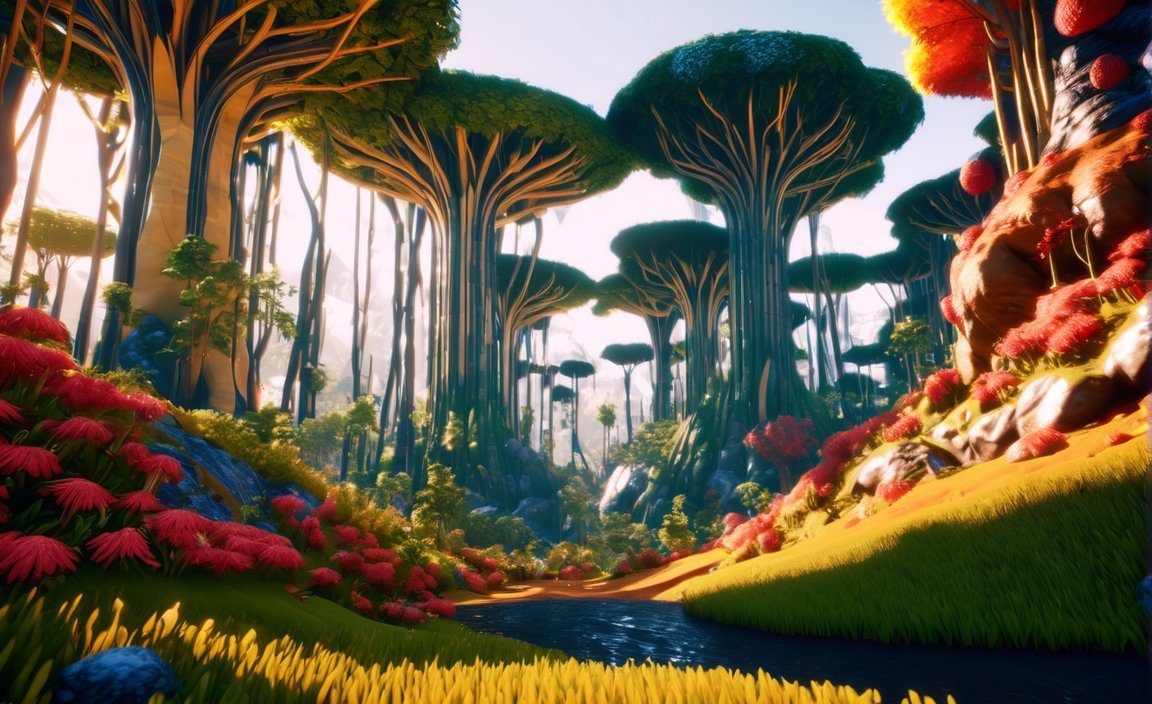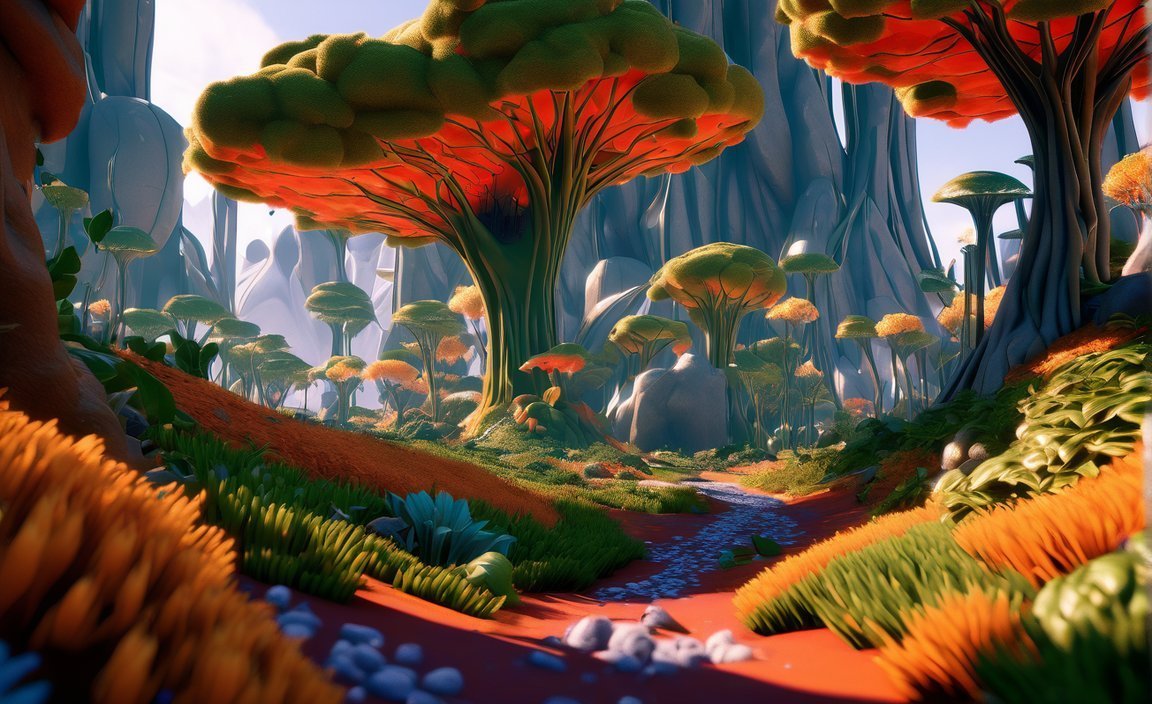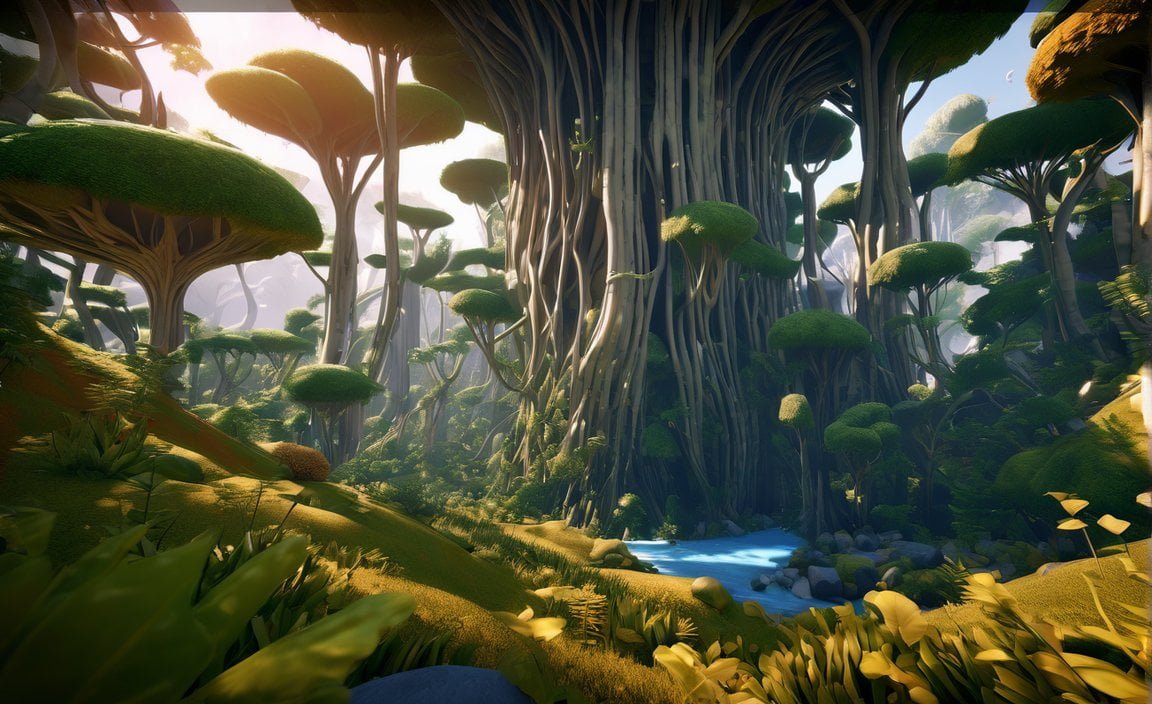Discover 10 Fascinating Biome Facts: Exploring Earth’s Diverse Ecosystems

Conservation efforts play a crucial role in preserving the delicate balance of our planet’s diverse biomes. From the vast African savanna, home to iconic wildlife, to the fire-prone chaparral biome, each ecosystem offers unique insights into the wonders of nature. As we delve into the freshwater biome, we uncover its essential role in sustaining life. Join us on a captivating journey through ten intriguing facts about these remarkable biomes and gain a deeper appreciation for the intricate tapestry of life on Earth.
Key Takeaways:
- Most plant and animal species are found in the rainforest biome, even though it covers only 6% of the Earth’s surface.
- Rainforest plants, like the Madagascan periwinkle, have been used for centuries as herbal remedies and have compounds that can treat leukemia and lymphoma.
- Deserts are not always hot; some deserts, like the Gobi and Antarctica, are cold and receive very little precipitation.
- The five major biomes in the world are desert, grassland, tundra, forest, and aquatic.
- An ecosystem’s climate refers to its typical weather conditions and patterns.
- Approximately one-third of the Earth’s stored carbon is found in Arctic tundra soil, which is frozen for most of the year.
- The aquatic biome is the largest on Earth, covering 75% of the planet.
- The temperature in the tundra biome can range from -34 degrees Celsius to 12 degrees Celsius during the winter season.
- Tropical rainforests have dense vegetation that allows less than 2% of sunlight to reach the forest floor.
- Temperate forests, also known as deciduous forests, experience seasonal temperature variations and receive abundant rainfall.
10 Fun Facts about Biomes
Biomes are fascinating ecosystems that cover different parts of our planet and host a wide array of plant and animal species. These unique habitats offer incredible insights into the diversity and interconnections of life on Earth. Let’s dive into 10 fun facts about biomes that will leave you amazed and eager to explore these extraordinary environments.
1. Rainforests: A Biodiversity Hotspot
Did you know that rainforests, despite covering only 6% of the Earth’s surface, are home to the majority of plant and animal species? These lush biomes teem with life, housing an astounding variety of flora and fauna. It’s like stepping into a treasure trove of biodiversity.
2. Medicinal Marvels in Rainforests
Rainforests not only brim with diverse species, but they also hold incredible medicinal potential. Take the Madagascan periwinkle, for example. This rainforest plant has been used for centuries as a herbal remedy and contains compounds that can effectively treat leukemia and lymphoma. Nature truly holds the key to our well-being!
3. Deserts: More Than Just Sands of Heat
Deserts evoke images of scorching heat and endless stretches of sand, but not all deserts conform to this stereotype. The Gobi Desert and Antarctica are cold deserts that receive minimal precipitation. These intriguing biomes challenge our notions and showcase the adaptability of life in extreme environments.
4. Five Biomes, Five Worlds
Our planet houses five major biomes: deserts, grasslands, tundra, forests, and aquatic. Each biome has its distinct characteristics, from the arid landscapes of deserts to the expansive grasslands and the icy plains of the tundra. Exploring these biomes is like embarking on a journey to five different worlds coexisting on Earth.
5. Climate: Defining Ecosystem Conditions
The climate of an ecosystem plays a vital role in shaping its flora, fauna, and overall ecosystem dynamics. It encompasses the typical weather conditions and patterns observed in a specific region. Nature’s masterpiece is intricately woven into these climatic variations that dictate the survival strategies of organisms.
6. Carbon Storage in the Arctic Tundra
Frozen for most of the year, the Arctic tundra might seem barren, but beneath the surface lies a secret reservoir of carbon. Approximately one-third of the Earth’s stored carbon can be found in the soil of the Arctic tundra. This frozen biome serves as an essential carbon sink in our fight against climate change.
7. Aquatic Biome: A Vast Marine Wonderland
Covering a staggering 75% of the planet, the aquatic biome is the largest of them all. From the vast expanses of the oceans to freshwater lakes and rivers, this watery realm supports an extraordinary range of life. Exploring the depths of the aquatic biome unveils a captivating world of colorful coral reefs, mysterious deep-sea creatures, and enchanting marine ecosystems.
8. The Chilling Temperatures of the Tundra
When winter arrives, the temperatures in the tundra biome can plummet to bone-chilling levels. Ranging from -34 degrees Celsius to 12 degrees Celsius, the freezing cold of the tundra challenges the resilience of its animal and plant inhabitants. They have adapted remarkable strategies to endure these extreme conditions.
9. The Canopy Keeps Sunlight at Bay
Tropical rainforests boast a thick and dense vegetation cover that casts shade and filters sunlight. This results in less than 2% of sunlight reaching the forest floor. This incredible adaptation shapes the unique structure of rainforest ecosystems, where plants in different layers compete for sunlight in a race to thrive and survive.
10. Seasons in the Temperate Forests
Temperate forests, also known as deciduous forests, witness the marvel of changing seasons. These dynamic ecosystems experience seasonal variations in temperature and revel in abundant rainfall. The vibrant foliage changes hues, painting a breathtaking landscape that reveals the natural rhythm of life and growth.
Now armed with these captivating biomes facts, you can embark on a journey to discover the wonders of our diverse ecosystems. The Earth’s biomes offer a myriad of surprises, waiting to be explored and protected. So let’s cherish and preserve these extraordinary realms that embody the beauty and resilience of life on our planet.
Grasslands are fascinating ecosystems with 10 fun facts waiting to be discovered. Did you know that grasslands cover about 25% of the Earth’s surface? Explore more interesting facts about grasslands here.
Ponds are teeming with life and full of surprises. Dive into the world of ponds and uncover 10 fun facts about these aquatic wonders here.
The savanna biome is a remarkable landscape, filled with diverse flora and fauna. Discover 10 fascinating facts about the savanna biome and its incredible ecosystem here.
The African savanna, home to iconic animals and stunning landscapes, holds 10 remarkable facts waiting to be explored. Delve into the wonders of the African savanna here.
The taiga biome, also known as the boreal forest, is an enchanting realm with 10 intriguing facts waiting to be discovered. Uncover the secrets of the taiga biome and its unique ecosystem here.
The Chaparral Biome: A Hotspot Prone to Wildfires
Did you know that the chaparral biome, located along the coastline of California, Southern Oregon, and Baja California in Mexico, is prone to wildfires? This unique ecosystem, resembling Mediterranean nature, experiences dry summers and wet winters. Let’s explore 10 fascinating facts about the chaparral biome and understand why it is particularly susceptible to wildfires.
1. A Mediterranean Landscape
The chaparral biome showcases a picturesque Mediterranean landscape, with its characteristic dry summers and wet winters. This climate pattern contributes to the abundance of vegetation found in this region.
2. Chaparral’s Wildfire Prone Nature
Mainly due to prolonged summer droughts and limited rainfall, wildfires have become a common occurrence in the chaparral biome. These fires play a crucial role in rejuvenating the ecosystem by clearing out old plant material and allowing new growth to take place.
3. Biodiversity Hub
Despite the threat of wildfires, the chaparral biome is home to a diverse array of plant species. In fact, approximately 20% of all Californian plant species can be found in this region.
4. Transitional Zone for Animals
Animals in the chaparral biome exhibit similarities to those found in grasslands and deserts, as the chaparral lies between these two ecosystems. Adapted to both dry and hot conditions, these animals have developed unique survival strategies.
5. Resilient Plant Succession
After wildfires ravage the chaparral biome, it may seem desolate, but don’t be fooled. Small flowering herbaceous plants quickly emerge after the first rainfall, taking over the landscape. However, their life cycle is short-lived, as they perish before the next summer arrives.
6. Extensive Coverage
Covering about 9% of California’s land area, the chaparral biome plays a vital role in the state’s overall ecological diversity. Its presence contributes to the variety of environments found in this region.
7. Temperature Extremes
The chaparral biome experiences an average temperature of 64°F (18°C). However, during the scorching hot summers, temperatures can soar up to 100°F (38°C) and persist for as long as five months.
8. Threats to Native Chaparral Biomes
Overgrazing, urbanization, and the introduction of exotic species pose significant threats to the native chaparral biomes. These human-induced activities disrupt the delicate balance within the ecosystem and can have detrimental effects on plant and animal populations.
9. Climate Change’s Impact
Climate change has had a profound impact on the chaparral biome, leading to more frequent droughts and higher temperatures. These changes further exacerbate the risk of wildfires and disrupt the delicate ecological equilibrium.
10. The Role of Firefighters
Given the high wildfire frequency in the chaparral biome, dedicated firefighters play a crucial role in managing and minimizing the potential destruction caused by these fires. Their efforts help protect both human settlements and the delicate ecosystem.
Key Takeaways:
– The chaparral biome, located along the coastline, is prone to wildfires due to summer droughts and limited rainfall.
– It resembles Mediterranean nature with dry summers and wet winters.
– Approximately 20% of Californian plant species can be found in the chaparral biome.
– Animals in the chaparral biome exhibit similarities to those found in grasslands and deserts.
– Wildfires in the chaparral biome clear out old plant material and facilitate new growth.
– The chaparral biome covers about 9% of California’s land area.
– It experiences temperature extremes, with hot and dry summers reaching up to 100°F (38°C).
– Overgrazing, urbanization, and exotic species threaten the native chaparral biomes.
– Climate change has led to more frequent droughts and higher temperatures in the chaparral biome.
– Firefighters play a crucial role in managing wildfires in the chaparral biome.
Sources:
– Top Facts: 10 Facts About The Chaparral Biome
– Easy Science for Kids: Chaparral Biome Fun Facts for Kids
The Freshwater Biome is Essential for Life
Freshwater biomes, consisting of lakes, rivers, ponds, and streams, play a vital role in sustaining life on Earth. Despite covering a small percentage of the planet’s surface, these bodies of water are essential for various ecosystems and human survival. Let’s delve into 10 fascinating facts that highlight the importance and characteristics of the freshwater biome.
1. Limited Availability
Only 3% of the Earth’s surface water is derived from freshwater biomes, emphasizing their scarcity compared to saltwater bodies[^1^]. Most of the freshwater exists as ice in glaciers or in underground aquifers[^1^].
2. Biodiversity Hotspots
Freshwater biomes are vibrant and biodiverse ecosystems, home to approximately 700 different species of fish[^1^]. Additionally, they support over 100,000 species of plants and animals, ranging from microscopic organisms to large mammals[^1^][^2^].
3. Drinking Water Supply
The freshwater biome is crucial for human survival as it provides more than half of our drinking water[^2^]. These reservoirs of fresh and clean water are essential for meeting our basic needs and sustaining our health.
4. Freshwater Isolation
What sets freshwater biomes apart from their marine counterparts is their low salt content. Any body of water with little to no salt is considered part of the freshwater biome[^1^].
5. Abiotic Factors Influence
The freshwater biome’s characteristics are shaped by various abiotic factors, including temperature range, precipitation levels, and the concentration of dissolved oxygen and nutrients[^1^]. These factors play a crucial role in shaping the ecosystem and determining the types of organisms that can thrive in freshwater habitats.
6. Threats to Freshwater
Freshwater biomes face numerous threats that endanger their delicate balance. Pollution, habitat destruction, climate change, and overfishing are key factors contributing to the degradation of these essential ecosystems[^2^].
7. Unique Fish Adaptations
Fish species in freshwater biomes have evolved specialized adaptations to survive in these habitats. They possess unique organs and behaviors that enable them to withstand varying water conditions, temperature fluctuations, and variations in dissolved oxygen levels[^2^].
8. Florida Everglades: The Largest Freshwater Biome
The Florida Everglades is the largest freshwater biome in the world, known for its expansive wetland ecosystem[^2^]. This remarkable area stands as a testament to the importance and resilience of freshwater biomes.
9. Supporting Aquatic Life
Freshwater biomes are vital ecosystems for aquatic life. The rich flora and fauna found in these habitats create a complex food web, supporting the survival of countless species. Protecting and preserving these biomes is crucial for maintaining biodiversity and the overall health of our planet.
10. Conservation Efforts
Given the threats facing freshwater biomes, conservation efforts are essential. Raising awareness, implementing sustainable practices, and promoting biodiversity conservation are key steps toward protecting these valuable ecosystems for future generations.
Key Takeaways:
- Freshwater biomes cover a small percentage of the Earth’s surface but are crucial for life and human survival.
- They are home to diverse species, including approximately 700 species of fish and over 100,000 species of plants and animals.
- Freshwater biomes provide more than half of our drinking water, fulfilling a basic survival need.
- These ecosystems are distinct from marine biomes due to their low salt content.
- Abiotic factors such as temperature range and nutrient concentration shape the characteristics of freshwater habitats.
- Pollution, habitat destruction, climate change, and overfishing are major threats to freshwater biomes.
- Fish species in freshwater biomes have unique adaptations enabling them to thrive in diverse water conditions.
- The Florida Everglades is the largest freshwater biome in the world, showcasing the importance of these ecosystems.
- Freshwater biomes support a complex food web and are vital for sustaining aquatic life.
- Conservation efforts are necessary to protect and preserve freshwater biomes.
Sources:
[^1^] Softschools.com. Freshwater Biome Facts
[^2^] Conserve Energy Future. Freshwater Biome: Location, Climate, Plants, Animals, and Threats

FAQ
Q1: Why are conservation efforts crucial for preserving biomes?
A1: Conservation efforts are crucial for preserving biomes because they help maintain the delicate balance of ecosystems, protect biodiversity, and ensure the sustainability of valuable resources such as clean water, fertile soil, and medicinal plants.
Q2: What iconic wildlife can be found in the African savanna biome?
A2: The African savanna biome is home to iconic wildlife such as elephants, lions, giraffes, zebras, wildebeests, cheetahs, and rhinoceroses. These animals have adapted to the unique grassland environment and play vital roles in the savanna’s ecosystem.
Q3: Why is the chaparral biome prone to wildfires?
A3: The chaparral biome is prone to wildfires due to its characteristic dry and hot summers, limited rainfall, and flammable plant species. These conditions create the perfect environment for fires to spread quickly and burn through the vegetation.
Q4: Why is the freshwater biome essential for life?
A4: The freshwater biome is essential for life because it provides drinking water for humans and supports diverse aquatic ecosystems. It is a habitat for countless plant and animal species, serves as a source of food, and plays a vital role in nutrient cycling and water purification.
Q5: What are some unique characteristics of the freshwater biome?
A5: Some unique characteristics of the freshwater biome include its low salt content, which distinguishes it from marine biomes, and its influence on the water cycle. Freshwater biomes also have distinct abiotic factors such as temperature range, precipitation levels, and dissolved oxygen concentration.












